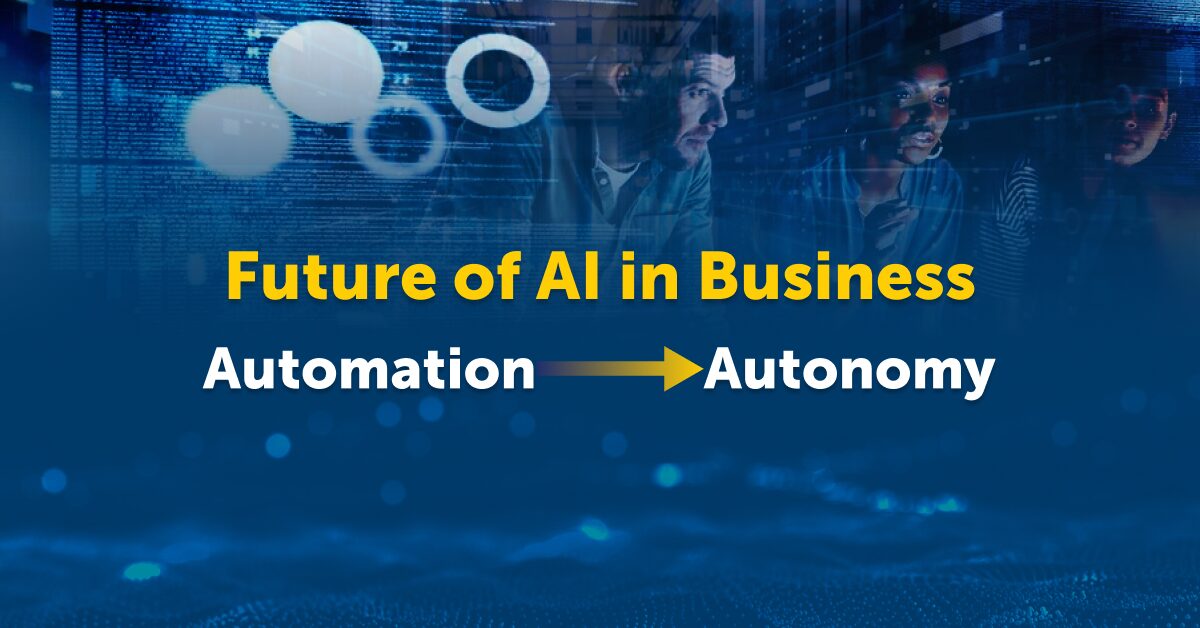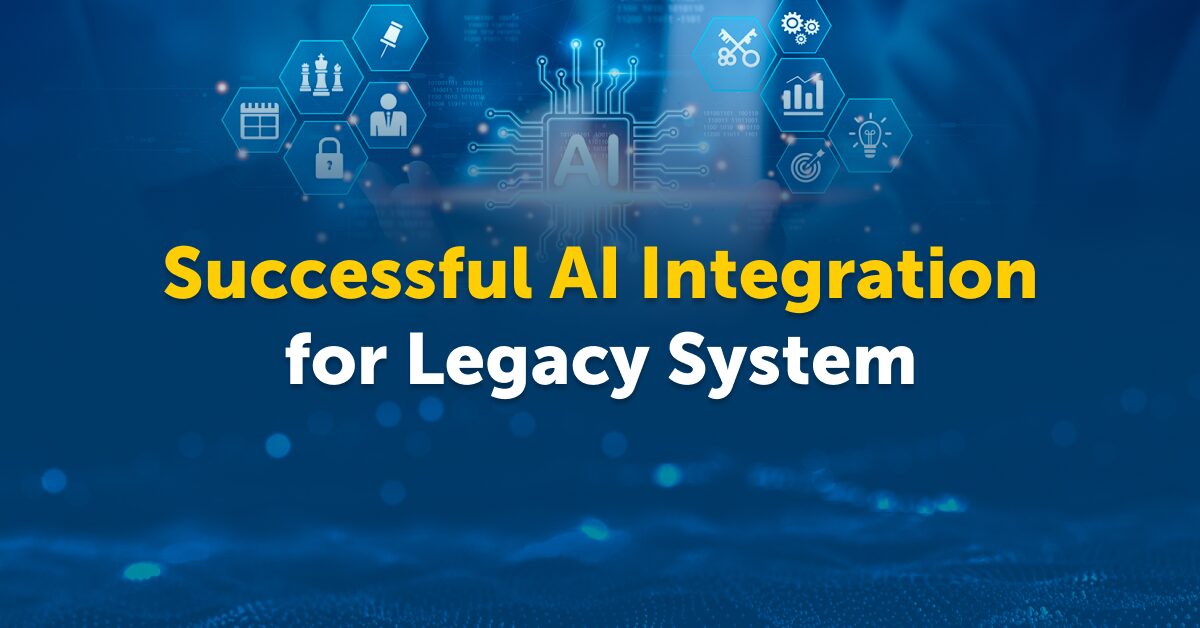Voice AI: The Evolution of Voice Interfaces in Business

In an increasingly digital world, businesses are rethinking how they engage with customers, streamline operations, and enhance accessibility. Voice AI, once considered futuristic, is now emerging as a powerful tool for business transformation. It goes far beyond traditional voice assistants offering context-aware, real-time interactions that enable faster decision-making and improved user experiences.
Conversational AI, the broader technology powering Voice AI, combines speech recognition, natural language processing (NLP), and machine learning to create fluid, human-like conversations. Together, they’re transforming how businesses operate across industries, functions, and touchpoints.
From Voice Commands to Intelligent Conversations
Voice AI has matured far beyond its early iterations of basic command recognition. Today’s systems leverage advanced natural language processing, machine learning algorithms, and neural networks to understand context, intent, and nuance in human speech. This technological foundation enables conversational AI to process complex queries, maintain contextual awareness across interactions, and deliver responses that feel genuinely conversational rather than scripted.
The underlying architecture of modern Voice AI systems incorporates several key components: automatic speech recognition (ASR) for converting spoken words to text, natural language understanding (NLU) for interpreting meaning and intent, dialogue management for maintaining conversation flow, and text-to-speech (TTS) synthesis for generating human-like responses. These elements work in concert to create seamless voice experiences that can handle sophisticated business scenarios.
Key technological milestones:
- Automatic Speech Recognition (ASR): Converts spoken language into text.
- Natural Language Understanding (NLU): Interprets user intent from the transcribed text.
- Text-to-Speech (TTS): Responds with natural-sounding, machine-generated speech.
This evolution allows modern voice interfaces to support multi-turn conversations, manage interruptions, and adapt to different speaking styles and dialects, all essential for seamless business applications.

Want guidance from an AI expert on how to implement AI in your business? Contact Fusemachines today!
Why Voice Interfaces Matter in Business
Voice AI is gaining traction in enterprise settings due to its ability to enhance efficiency and accessibility while reducing friction across customer and employee interactions. Some compelling benefits include:
- Speed: Voice input is often faster than typing or navigating UI elements.
- Hands-free operation: Ideal for workers in healthcare, manufacturing, logistics, and other field-based roles.
- Accessibility: Improves inclusivity for users with visual or motor impairments.
- Natural engagement: Lowers barriers for users less comfortable with complex digital systems.
Industry Applications Driving Business Value
Healthcare and Telemedicine
Healthcare organizations are implementing Voice AI to streamline patient interactions and improve care delivery:
- Patient Engagement: Conversational AI platforms conduct preliminary health screenings, provide medication reminders, and offer basic health information while ensuring HIPAA compliance
- Clinical Documentation: Voice-enabled systems allow medical professionals to update patient records through natural speech, reducing administrative burden
- Telehealth Integration: Voice AI facilitates remote consultations and patient monitoring, making healthcare more accessible
- Appointment Management: Automated scheduling and rescheduling reduces staff workload while improving patient convenience
Financial Services
Banking and financial institutions leverage Voice AI for enhanced security and customer service:
- Biometric Authentication: Voice pattern recognition provides secure customer identification with high accuracy rates
- Transaction Processing: Customers can check balances, transfer funds, and pay bills through natural conversation
- Financial Advisory: Conversational AI analyzes spending patterns and provides personalized financial guidance
- Fraud Detection: Advanced systems identify suspicious activities through voice stress analysis and behavioral patterns
Retail and E-commerce
Voice AI is revolutionizing retail through personalized shopping experiences:
- Voice Commerce: Customers can search for products, compare prices, and complete purchases through natural conversation
- Inventory Management: Real-time stock inquiries and automated reordering streamline operations
- Customer Support: 24/7 conversational AI handles returns, exchanges, and product questions
- Personalized Recommendations: Systems analyze purchase history to suggest relevant products, increasing sales
Media and Entertainment
The media industry is embracing Voice AI to enhance content creation and audience engagement:
- Content Production: Voice AI assists in scriptwriting, voiceover generation, and automated video editing
- Audience Interaction: Interactive podcasts and radio shows use conversational AI for real-time listener engagement
- Content Discovery: Voice-powered recommendation engines help users find relevant movies, shows, and music
- Accessibility: Voice AI makes content more accessible to visually impaired audiences through audio descriptions and navigation
Technology
Tech companies are at the forefront of Voice AI innovation and implementation:
- Developer Tools: Voice-enabled IDEs and coding assistants improve programmer productivity
- System Administration: IT professionals use voice commands for server management and troubleshooting
- Software Testing: Conversational AI automates testing scenarios and bug reporting processes
- Product Integration: Voice AI becomes a standard feature in enterprise software and consumer applications
Enterprise and Internal Operations
Within organizations, Voice AI is transforming internal processes:
- Database Access: Employees query complex databases using natural language instead of SQL commands
- Report Generation: Automated report creation through voice commands saves hours of manual work
- Meeting Management: Transcription and summarization powered by conversational AI improve productivity
- Workflow Automation: Voice-triggered processes streamline repetitive tasks across departments
Business Benefits: Beyond Efficiency
While faster interactions and lower overheads are immediate gains, Voice AI also contributes to long-term strategic benefits:
- Customer satisfaction: 24/7 voice-enabled support ensures instant, personalized help.
- Brand differentiation: Businesses offering intuitive voice interactions stand out.
- Data-driven insights: Voice interactions generate rich data for improving services.
- Scalability: Voice bots handle peak volumes without the cost of additional human staff.

Want guidance from an AI expert on how to implement AI in your business? Contact Fusemachines today!
Technical Considerations for Implementation
Hardware and Infrastructure Requirements
Successful Voice AI deployment requires careful attention to several technical factors:
- Audio Quality: High-quality microphones and noise cancellation capabilities directly impact system performance
- Processing Power: Real-time voice processing demands sufficient CPU and GPU resources for optimal response times
- Network Infrastructure: Reliable connectivity ensures consistent performance, especially for cloud-based solutions
- Edge Computing: Local processing reduces latency and improves privacy by keeping sensitive data on-premises
Security and Privacy Protocols
Data protection becomes paramount when implementing Voice AI systems:
- End-to-End Encryption: Secure data transmission protects sensitive conversations from interception
- Biometric Security: Voice authentication adds robust security layers while maintaining user convenience
- Compliance Standards: GDPR, HIPAA, and industry-specific regulations require careful implementation planning
- Data Retention Policies: Clear guidelines for voice data storage and deletion ensure regulatory compliance
System Integration Challenges
Conversational AI platforms must seamlessly connect with existing business infrastructure:
- API Architecture: Robust interfaces enable integration with CRM systems, databases, and enterprise applications
- Middleware Solutions: Integration platforms facilitate communication between Voice AI and legacy systems
- Data Synchronization: Real-time data updates ensure conversational AI has access to current information
- Scalability Planning: Systems must handle increasing user loads without performance degradation
Overcoming Implementation Challenges
Language and Dialect Considerations
Despite its potential, Voice AI implementation presents several challenges that organizations must address strategically:
- Accent Recognition: Global businesses must ensure systems handle diverse accents and pronunciation variations
- Multilingual Support: Conversational AI systems require training on multiple languages for international deployment
- Regional Dialects: Local speech patterns and colloquialisms need specific attention for accurate interpretation
- Cultural Context: Understanding cultural communication styles improves interaction quality
Conversation Management Complexities
Maintaining natural dialogue flow requires sophisticated system design:
- Context Preservation: Users expect Voice AI to remember previous interactions and conversation history
- Intent Recognition: Systems must accurately identify user goals even with ambiguous or incomplete requests
- Error Handling: Graceful recovery from misunderstandings maintains user confidence and engagement
- Conversation Boundaries: Clear escalation paths to human agents when Voice AI reaches its limitations
Data Quality and Training Requirements
Effective Voice AI depends on comprehensive training datasets:
- Domain-Specific Data: Industry-specific terminology and use cases require specialized training materials
- Customer Demographics: Representative samples ensure accurate recognition across user populations
- Edge Case Scenarios: Unusual requests and error conditions need specific training attention
- Continuous Learning: Ongoing data collection and model updates improve system performance over time
What’s Next: The Future of Voice AI
Voice AI is evolving rapidly in both capability and context. Future developments to watch include:
- Emotion-aware voice AI: Systems that adjust tone and response based on detected emotional cues.
- On-device processing: For faster, more secure interactions without relying on the cloud.
- Multimodal interfaces: Voice AI paired with gesture, vision, or text for a more holistic experience.
- Language expansion: Models becoming proficient in underrepresented languages and dialects.
These advances will further embed Voice AI into business strategies, especially as real-time, empathetic interaction becomes a competitive differentiator.
Conclusion
As voice interfaces become smarter and more adaptive, they enable companies to deliver faster, more natural, and more accessible experiences across functions.
For business leaders, investing in Voice AI is not just about keeping up with trends, it’s about reimagining how people interact with technology. When deployed thoughtfully, Voice AI becomes a strategic asset that streamlines operations, enhances engagement, and sets a foundation for future innovation.
Fusemachines helps businesses unlock these opportunities by building Voice AI and conversational AI solutions tailored to industry-specific needs. Whether you’re looking to automate service desks, enable voice-driven analytics, or develop custom AI agents, the time to act is now.

Want guidance from an AI expert on how to implement AI in your business? Contact Fusemachines today!


